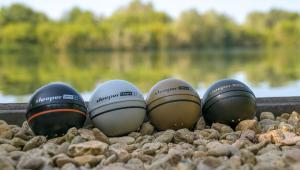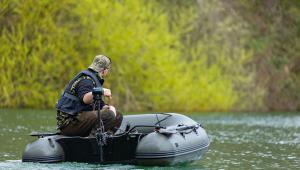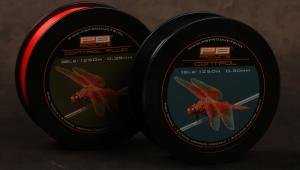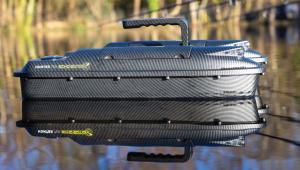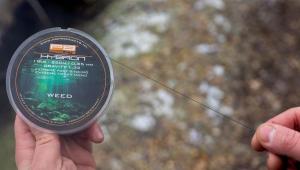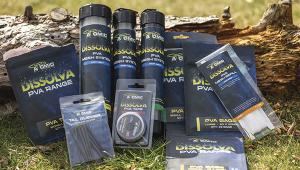Baggin’ Up this Winter
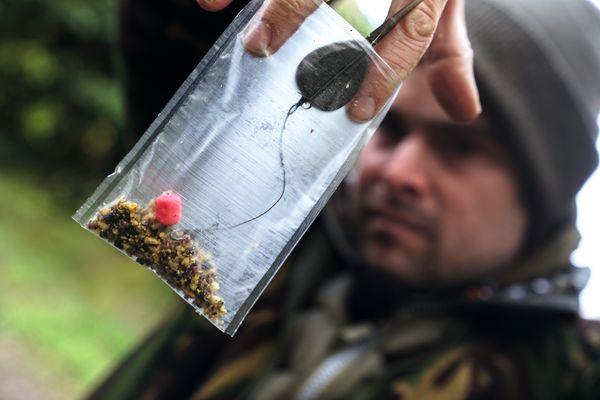
I am certainly an advocate of fishing PVA in the winter and have been for many years, although I will use PVA in various forms throughout the year when I feel the time or situation I am faced with dictates so. When I come to hang up the Spomb rod and look to scale back on the amount of bait I use, I certainly believe it is difficult to beat the effectiveness of a solid PVA bag, offering ultimate attraction, in a small, compact pile of free offerings.
For me, the solid ticks a number of boxes for winter fishing and is a simple, easy to use method that you can rely on time and time again. This short, insightful feature details how I approach winter bag fishing; when I prefer to adopt the solid and the type of mix I prefer to use to ensure maximum attraction and leakage in cold water.
The Mix
The mix is simple, but a common mistake I see people doing in the colder months is still using the same type of pellet they were using in the height of summer. What you have to remember is, the overall breakdown and leakage rate of bait items slows considerably during the winter months.
For this reason alone, I significantly reduce the amount of oily pellets in my mix, replacing them with a soluble, sweet product such as the Milk N Nut Crush for example. To this, I will add a cloudy, creamy liquid and a handful of very finely crumbed Live System boilies.
You need to remember that when using solid bags to keep all the bait items as small as possible – 2 to 3mm pellets and fine crumb – in order to make the bag as tight and compact as possible, reducing the amount of air trapped within the bag. Then couple this with small hookbait, such as the new Northern Special dumbell wafter, ensuring both the loose feed and hook bait have similar density properties so they react in the same way when a fish mouths or sucks at the bag.
A firm, compacted bag will aid with casting, especially if there is any type of cross or headwind, which may significantly impact your ability to cast accurately. Like a lead, you need to be able to punch a bag straight, which certainly makes a big difference when fishing to features such as snags and islands.
How To: Make The Bank Mix
1. Jimmy’s mix starts with a few handfuls of Milk N Nut Crush.
2. This is followed with a small handful of mixed sized pellets.
3. James likes to add his preferred winter boilie – Live System.
4. He ensures he crushes the baits up before adding to the mix.
5. He finishes the mix with a dose of NS Bait Booster liquid…
6. … then leaves the finished mix overnight before using.
Presentation
One of the biggest detrimental factors with winter fishing is presentation; at this time of year, the lake bed collects a large amount of debris in the form of falling leaves and dying weed. It can be quite tricky to determine exactly what you are presenting over, especially if you are roving baits around without necessarily using a marker or the like to determine the exact lake bed make-up.
With a solid bag, all of those doubts are eradicated; the hook link, hook bait and lead are neatly encased within the bag itself, meaning there is no risk of the hook becoming impaled in any debris. As the bag falls through the water column, the large surface area will mean that it settles on top of any low-lying matter such as weed and leaves, breaking down and leaving the surrounding bait and hook bait effectively presented.
This means that the solid bag is perfect for roving about, casting at subtle shows, to snags or reed beds that attract fish in the winter months, leaving you in no doubt that you are fishing effectively.
End Tackle
Solid bag rigs can be as simple or complicated as you like, but as a general rule of thumb, a short, supple braided link will allow you to wrap the link inside the bag as you introduce the loose feed offerings.
I prefer to use a heavy lead, usually around 3 or 4oz, to set the hook firmly once the hook bait has been picked up. The Fox inline drop-off system is perfect and neat, allowing you to run your preferred leader material directly over the top of the lead.
Visual Effect
One of the alternative reasons that I switch from the darker pellets to the light coloured, creamy mix is for the visual aspect. As the bag is pretty much all of the loose feed that I will be introducing on a short session, I want that small pile of bait surrounding my hook bait to be very obvious and visual to any passing carp. In general, the light-coloured mix stands out in most situations, especially against dying weed and darker, choddy areas.
The cloudy liquid that I add to the mix works well to create a halo of attraction surrounding the baited patch, which also aids the delivery of attraction and food signals throughout the water column.
Sizes Of Bag
I have used a range of bag sizes over the years, but the small ones tick all the boxes for me, especially during the winter. First and foremost, they are much more aerodynamic to cast, allowing you to be more accurate at greater distances.
Secondly, I feel that the small bag is an ample amount of bait surrounding the hook bait; at the end of the day, you are not trying to feed the fish but entice a single carp to drop down and have a feed over the minimal pile of loose feed on offer. The reason why a wafter works so well with this type of presentation is that when the carp sucks at the bag mix, any light bait items will simply fly back into the carp’s mouth, generating a bite instantly.
This is a basic outline to my solid bag fishing in the winter; this simple approach is without doubt a reliable one and with the correct fundamentals that formulate an effective presentation, I certainly feel that it is an effective tactic in the cold.
How To: Make The Bank Mix
1. Begin by taking a small solid PVA bag.
2. Add a cushion of bait in the bottom with the hook bait on top like so.
3. Begin to fill the bag, while teasing in the hook link.
4. Fill the bag to around two inches from the top, ensuring the rig tail rubber is visible.
5. Twist the top of the bag around the tail rubber.
6. Using PVA tape, tie the bag off.
7. Trim the corners of the bag and fold back, sticking them down.
8. The finished bag, ready to be cast out.
- Log in or register to post comments
